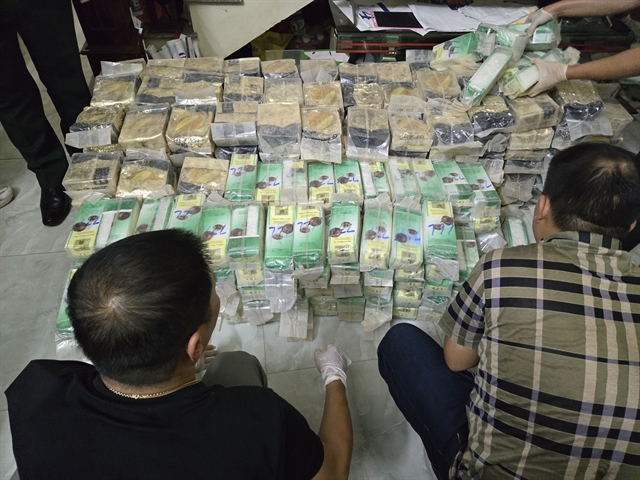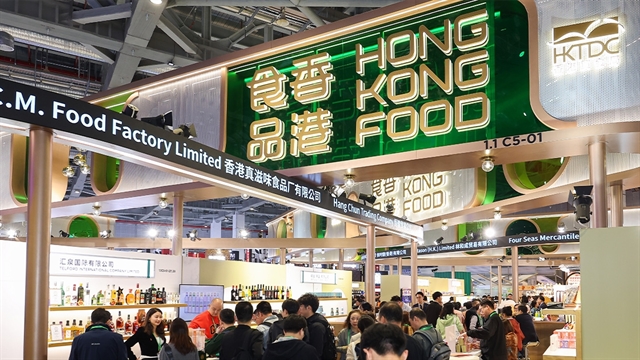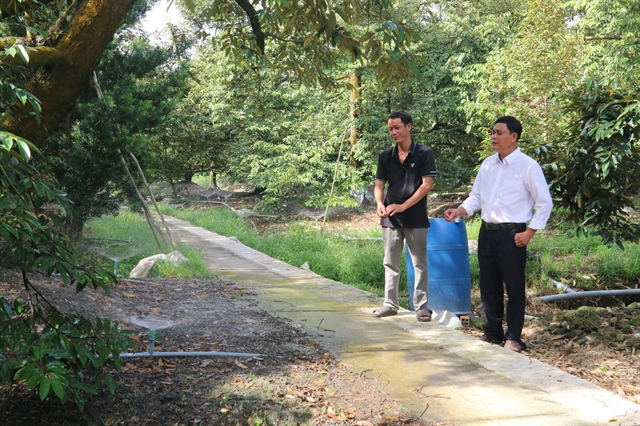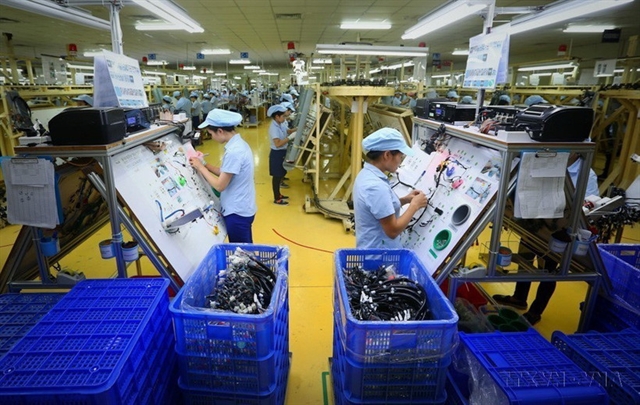 Society
Society

 |
| A durian orchard in Tiền Giang Province’s Cai Lậy District is equipped with an automatic irrigation system. — VNA/VNS Photo Minh Trí |
TIỀN GIANG — The Cửu Long (Mekong) Delta province of Tiền Giang is boosting the development of fruit growing areas that are granted production codes for exports.
The country’s largest fruit producing province has more than 80,000ha of fruits with an annual output of 1.5 million tonnes.
It has 187 fruit growing areas with a combined area of 17,396ha that have been granted production codes as of the end of last month, according to its Department of Agriculture and Rural Development.
The code-granted areas grow jackfruit, dragon fruit, mango, milk apple, rambutan, longan, durian and watermelon.
To get the code, a fruit growing area should have at least 10ha and follows Vietnamese good agricultural practices (VietGAP) or other equivalent standards.
Nguyễn Văn Mẫn, director of the department, said the department will instruct farmers to expand fruit growing areas that are granted production codes to serve export markets.
The department will provide advanced farming techniques for farmers and increase the use of organic fertilisers and bio-pesticides, he said.
It will co-operate with relevant departments and agencies to develop the cultivation of durian to VietGAP and other safety standards.
The province, which has the largest durian growing area in the country, has established specialised durian growing areas covering a total area of more than 11,000ha for export.
The areas have an average output of 28 tonnes per hectare a year.
To develop durian cultivation sustainably, the province is implementing a project of developing linkages among stakeholders in the industry this year.
The project, which began in August, has been implemented in the province’s major durian growing districts of Cai Lậy, Cái Bè and Châu Thành, and Cai Lậy Town.
The project aims to increase the competitiveness of the province’s durian crops, apply advanced farming techniques in cultivating durian and secure stable incomes for farmers.
It has also helped implement the province’s agriculture restructuring plan and promoted agriculture production towards modern and sustainable development, along with climate change adaptation.
Under the project, the province has provided management skills for managers of durian growing co-operatives, organised meetings between co-operatives and companies to promote their linkages in cultivating and selling durian.
The province has boosted the development of more durian growing areas that have earned production codes.
It has received 91 applications asking for production codes for more than 4,410ha of durian.
Farmers in the province are also harvesting off-season durian and have gotten bumper harvests and good selling prices.
Võ Văn Men, head of the province’s Plant Protection and Cultivation Sub-department, said the province has about 8,000ha of durian producing off-season harvests this year and the harvest is estimated to last until March next year.
Farmers are estimated to get a high yield of 25-30 tonnes per hectare.
Traders purchase durian in orchards at a price of VNĐ78,000-80,000 (US$3.1-3.2) a kilogramme, up VNĐ10,000 from early last month.
Nguyễn Văn Hiền, who has a 4,000sq.m durian orchard in Cai Lậy District’s Cẩm Sơn Commune, estimates he harvests eight tonnes of off-season durian and earn about VNĐ300 million ($12,000) at the current price.
He expects the price of off-season durian will increase further, he said.
Việt Nam’s durian has been approved to export through official channels to China, and this is one of the major reasons for the increasing price of durian, according to the department.
Huỳnh Tấn Lộc, director of the Ngũ Hiệp Durian Co-operative in Cai Lậy District, said exporting durian through official channels to China has created favourable conditions for the cultivation of durian which is the province’s well-known specialty.
The price of durian in the 2022-23 harvest season is estimated to be high and equal to the current price, he said. — VNS




